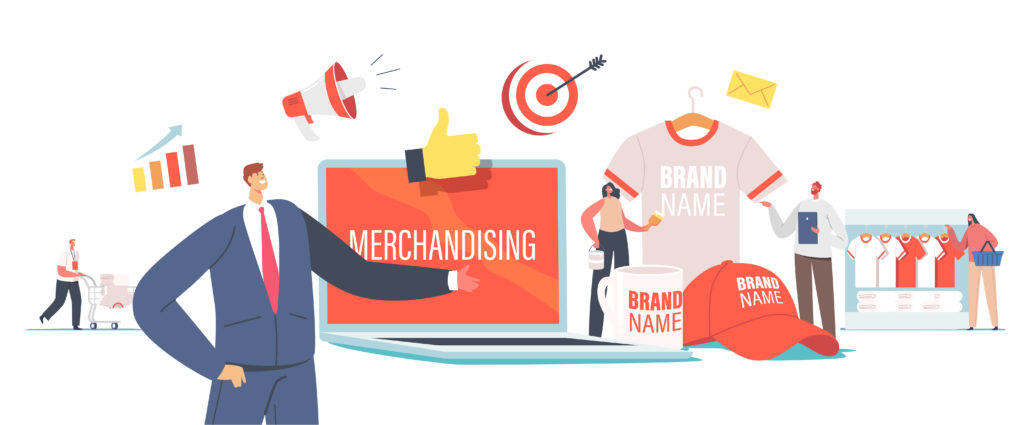Designing promotional products should take time and careful planning to become effective. In many cases, product or business owners seek the help of marketers to create designs that’d make their promotional products one-of-a-kind. In other cases, business owners choose to create their promotional items.
Suppose you’re an entrepreneur planning to create your own publicity materials. In that case, you may need to know some technical tips for designing your promotional items. These points could help you make materials to make your products, services, and advocacies popular with your target audience. For that purpose, here’s an article to guide you. So, read on!
1. Promote A Specific Image
Before you begin doodling your promotional design, you may start thinking of a central image that’d speak for your product or service. The image should capture or be associated with the benefits. Also, believe that the image must connect to your target audience by evoking emotions. It may need to tell a story or become personally relevant to your market.
In other words, the design should touch the interest and satisfy the audience’s needs. For example, if your product is a laptop cover, you may create a design associated with digital technology while subtly enumerating what the product can provide.
To make your image unique, you may use design templates. Many of these are found on the web, while design companies provide others. These are appropriate for individuals who aren’t design-savvy. If you’re considering shirts and similar items for your promotion, you may think about using screen printing technology for a customized image and design.
2. Create An Easy-To-Remember Logo
Aside from an image, you may work out creating an easy-to-remember logo. You may need to use the right tone, shape, and typography to make it memorable. It could be simple, but it can still be trendy and shows business cues. In addition, the logo you make should blend with a generic background design so it can be easily placed in any template.
In many cases, product owners use generic logo makers to help them create their logos. These prototypes usually have default colors, shapes, and lines that makers could choose from. Yet, the product owners can also choose to modify shapes and colors.
3. Choose The Right Fonts
Font styles and sizes send a specific message to a product’s market. In choosing fonts for your design, you may consider the following elements:
- Legibility
This refers to how distinguished a typeface is from other types. Some aspects of font that could affect legibility are x-height and stroke contrast. If your design contains a headline or main text, you may use display faces of fonts appropriate for larger formats. Less dominant text may use text or body faces or those suitable for long passages.
- Font Size
Designs with single lines may use the 8pt standard in products with print areas similar to shirts. For smaller lines, ½pt is preferred. In thinking about the font size, you may also consider how many lines you’re going to print and the typeface and thickness of each letter or word.
- Spacing
This both refers to the spacing between the letters and lines. As a rule of thumb, you may use a point of the font size used. In connection, you may need to avoid too tight or too wide spaces unless their purpose is to grab attention.
- Contrast
Whether to highlight or show the effects of your design, you may consider contrast to add or lessen your design’s shade. Headlines or titles may have darker text, while display text can use paler contrast.
- Visual Hierarchy
This refers to using two or more font weights and variations in your design. In considering this element, you may need to choose an easy-to-scan design, logos, and text even if they widely differ in size and styles.
- Depth And Dimension
Adding depth and dimension to your promotional design can make it more realistic. These involve altering and adjusting the foreground, overlapping and reducing scales, and forming contact points in many cases. To better understand how depth and dimension work, you may first need to know the design principles, such as emphasis, proportion, harmony, contrast rhythm, and balance.
4. Keep The Design Simple And Sweet
In most cases, simple designs give clear messages. Because of this, many designers opt for minimalist graphic arts and basic font styles as a promotional strategy. Many marketers also believe that simple designs are easier to remember than complex ones because of their clarity.
In some cases, complex designs could blur the message as they tend to confuse the reader or viewer because they’re more challenging to process. Typically, this leads to disorganized thoughts and unsuccessful brand recall. On the other hand, many effective promotional materials attribute their success to their minimalist designs.
5. Incorporate Different Lines
Lines are essential in every design. They can divide space, organize design elements, and direct the viewer’s eye. You may consider its thickness, direction, and forms when choosing and using lines for your promotional design. You may also think about the things they symbolize.
For some ideas on what they symbolize, here are the standard lines and their meanings:
- Curvy Lines: They may reflect comfort and ease.
- Straight Lines: They may symbolize prominence or peace.
- Straight Vertical Lines: They may suggest firmness and strength.
- Straight Horizontal Lines: They may represent calmness and distance.
- Diagonal Lines: They may suggest movement and instability.
- Zigzag Lines: They may reflect restlessness, action, and anxiety.
6. Choose Colors Suitably
Colors are effective communication and product marketing tools to incite actions, influence psychological reactions, and influence feelings. Because of this, you may need to choose the colors for your design carefully. To know more about what colors may tell, here are some commonly used colors, their associated meanings, and the situations they may be appropriate for.
- Red
This stimulating color is appropriate if your product and services are associated with action and excitement. You may also use this for products used during emergencies, such as fire extinguishers and alarms.
- Blue
If your market is male-dominant, you may consider blue as it’s believed to be preferred by most men. In addition, it offers peace and tranquility. Businesses associated with security, comfort, and reliability may use this color. If your product is about food and diet, you may want to refrain from using this color as it’s one of the least appetizing.
- Green
This color may symbolize calmness, life, nature, and many other positive qualities. Most products and services linked to the environment and life use green as their dominant color.
- Yellow
Yellow is one of the most attention-grabbing colors. It’s highly associated with energy, brightness, and warmth. If your products and services are about electricity, such as lamps and generators, you may think about using yellow.
- Orange
Like yellow, orange is also linked to energy. Apart from it, this color is also associated with enthusiasm and happiness. In some cultures, orange may symbolize meditation and redemption. This is a standard color for many advertising materials that want to catch attention.
- Purple
This color may represent royalty, wisdom, spirituality, and mystery. Visually, many people consider purple one of the most challenging to discriminate against. If you prefer a more experimental color to define your product or service, you may consider using purple.
- Black
You may use this color to associate your products and services with power, elegance, and boldness. Many institutions are known for elitism, formalism, and luxury use black as their branding color. In addition, black may be identified as the most preferred color in various designs.
- White
You may consider using white if you’re after cleanliness, peace, and innocence products and services about safety, medicine, and cleaning materials. In addition, you may use this to add contrast to your dominant dark colors.
7. Think About The Texture
Textures in design refer to the visual texture. In considering this element, you may need to assess whether you need a realistic or an abstract promotional design. If you need a realistic one, you may need to ensure that your graphics and text have the height and thickness to provide dimensions to the design.
You may choose texture based on your product to maximize one’s visual texture. For example, if you’re rooting for organic products, you may use nature-based textures, such as rocks, leaves, and rocks. If your products are about AI technology and discoveries, you may opt for modern textures.
Mixing up nature, modern, and other textures is also a good idea if you want to choose a fresher type. You may seek the services of a graphic artist if you desire a high-quality design or use free services or software if you have the basic skills to create a design and consider appropriate textures.
Wrapping Up
Promotional items sell a product, service, and advocacy. To make the most of it, you may consider reading this article and applying this write-up’s technical tips. While these tips don’t guarantee a sellout for your products and services, they surely can help grab the attention of your target market.
For more ideas about designing your promotional items, you may ask about the best practices of seasoned graphic artists and subscribe to advertising blogs. You may also study the best-known and most effective promotional designs to date.
Suggested:
8 Killer Strategies To Boost eCommerce Profitability in 2022.
10 Reasons Why Social Media Marketing Is Important for Your Business.
How to choose an affiliate program and monitor the availability of your sites.
6 Aspects to Consider Before Selecting a Video Streaming Service For Your Business.






 AI Versus Copywriters: Who Will Win the Battle in the Near Future?
AI Versus Copywriters: Who Will Win the Battle in the Near Future?